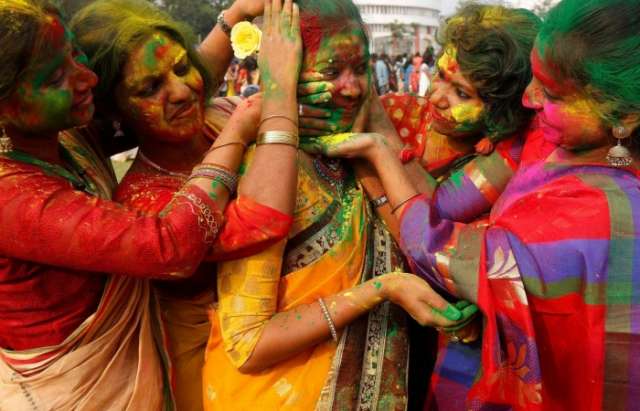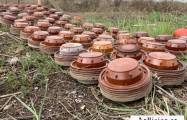1. Holi, represented by today's vibrant Google Doodle, celebrates the triumph of good over evil
The festival, which dates back to the 4th century, is best known for the sight of carnival revellers gathering to toss coloured powder into the air, completely coating one another, which always makes for spectacular pictures that are duly reported around the world every year.
There is a serious purpose behind it all, however. Holi celebrates fertility and love and marks the end of winter.
2. The festivities take place across two days
Holi is divided into two parts: Holika Dahan and Rangwali Holi.
The former is staged the night before the big day and sees celebrants gather to observe a purification ritual in which a pyre of logs and dung-cakes is burned, intended to represent the victory of good over evil. Families gather to roast grain, popcorn, coconuts and chick peas together.
Rangwali Holi is the main event: when everyone races around throwing handfuls of gulal (fine coloured powder) and spraying water, a joyous occasion in which differences of caste and ethnicity are put aside.
This is the most common form for celebrations to take but they can run on for much longer: Holi lasts for 16 days in the Braj region of India.
3. Holi draws its origins from Indian mythology
The idea behind the holiday comes from the legend of Krishna and Radha. The supreme deity fell in love with the goddess Radha but was concerned about differences in their skin colour, his being blue. His mother advised him to playfully paint her face to overcome their differences. Lovers today continue the tradition by making sure their own faces match when the gulal begins to be thrown.
Holi also takes inspiration from Hindu Vedi scriptures in which Holika, a malevolent devil, was burned to death after her father, the demon king Hiranyakashyap, ordered her to walk through the flames carrying her brother Prahlad who had angered him by foresaking evil to become a devotee of Vishnu. The boy survived but Holika was cremated. This is the significance of the ceremonial fires - which worshippers even run through in homage to the legend - that are staged to this day.
4. The timing of Holi is synchronised with the moon
The date of the celebration varies every year in accordance with lunar cycles.
This year Rangwali Holi takes place on 13 March, while the pyres of Holika Dahan will be burned the evening beforehand.
5. How do people clean up once the party’s over?
Hindus are advised to moisturise their skin carefully before taking part and some oil their hair to ensure the gulal can be easily rinsed out - a bid to pre-empt disaster.
Those taking part are also careful to ensure that the powders thrown are non-harmful and so they are most commonly made from a mix of food dye, flour and water.
/The Independent/
More about: #India
















































